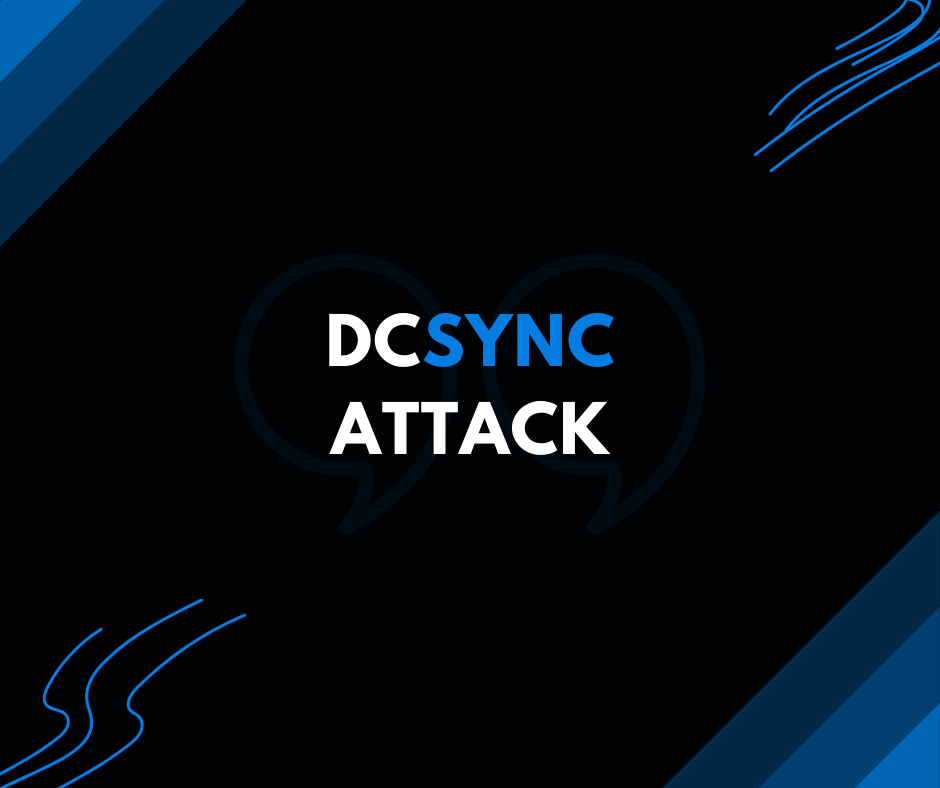DCSync Attack

What is DCSync?
DCSync leverages the Directory Replication Service API (DRSUAPI) of Windows Domain Controllers to simulate the replication process from a remote domain controller. Unlike traditional methods such as dumping and parsing the NTDS.dit file, DCSync operates by initiating a DsGetNCChanges operation through an RPC request, allowing attackers to replicate data, including sensitive credentials, from the domain controller.
Consequences of DCSync
The implications of a successful DCSync attack are severe. Attackers gain access to major credential material, including the Kerberos krbtgt keys, which are essential for legitimate ticket creation. With this information, adversaries can forge tickets, escalate privileges, and move laterally within the network undetected. Essentially, DCSync grants attackers a foothold to maneuver within the Active Directory environment, potentially compromising the entire infrastructure.
Attack Prerequisites and Privileges
To execute a DCSync attack, perpetrators require domain admin privileges, specifically the DS-Replication-Get-Changes and DS-Replication-Get-Changes-All extended privileges. By default, members of groups like Administrators, Domain Admins, Enterprise Admins, and Domain Controllers possess these privileges. However, over-privileged accounts within the network can also be exploited to grant controlled objects the authority to perform DCSync operations.
Attacking using a plaintext password
secretsdump -outputfile 'something' 'DOMAIN'/'USER':'PASSWORD'@'DOMAINCONTROLLER'Attacking with Pass-the-Hash
secretsdump -outputfile 'something' -hashes 'LMhash':'NThash' 'DOMAIN'/'USER'@'DOMAINCONTROLLER'Attacking with Pass-the-Ticket
secretsdump -k -outputfile 'something' 'DOMAIN'/'USER'@'DOMAINCONTROLLER'Mitigating DCSync Attacks
Protecting against DCSync requires a multi-faceted approach:
Limit Privileged Access: Restrict domain admin privileges to only essential personnel, and regularly review and audit privileged accounts to prevent unauthorized access.
Implement Least Privilege: Follow the principle of least privilege, granting users only the permissions necessary to perform their duties. This reduces the attack surface and limits the potential impact of credential theft.
Enforce Strong Authentication: Implement strong password policies, disable reversible encryption for storing passwords, and encourage the use of multifactor authentication (MFA) to enhance security.
Continuous Monitoring and Detection: Employ robust monitoring tools to detect anomalous behavior, such as unusual replication requests or unauthorized access attempts, enabling swift response and mitigation.
Conclusion
DCSync represents a sophisticated threat to Active Directory environments, posing significant risks to organizational security. Understanding the mechanics of DCSync and implementing proactive measures to mitigate its impact is essential for safeguarding sensitive credentials and maintaining a resilient defense posture. By adopting a comprehensive security strategy that combines preventive measures, user education, and continuous monitoring, organizations can effectively defend against DCSync attacks and fortify their defenses against evolving cyber threats.
Read my other blogs at this page.
